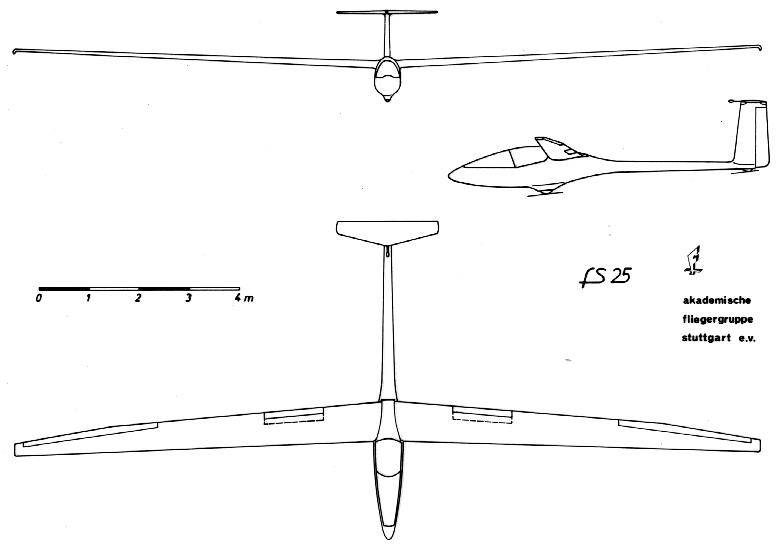Good Things Come in Small Packages
After the completion of the Hidalgo project, it was possible to compare calculations with the end result. These comparisons showed what could be improved or done better, giving birth to the fs25 Cuervo.
Aerodynamically speaking, the fuselage seemed to have the largest potential for development. Calculations made using programs on the UNIVAC 1107 computer owned by the Institute for Statics and Dynamics of the university showed on the other hand that changes to the wing, specifically profile, lift distribution, and wing planform, weren’t necessary. These revelations led to the reuse of the fs23’s wing forms, stretched to 15m. A group of Akaflieg members undertook experiments with resistance measurements on different fuselage forms. These showed that by reducing the surface area and heavily constricting the fuselage diameter directly behind the region of maximum thickness, it was possible to greatly reduce fuselage drag.
The wing connections of the Hidalgo were given a think over in an attempt to find a lighter and smaller alternative. Problematic however is the transmission of forces in GRP structures. In the Hidalgo, it was possible to turn the laminate into a rivetable material due to the inclusion of birch veneer. This was replaced with additional layers of fiberglass fabric in the fs25. Fittings were then glued to the laminate to allow for riveting. Experience with this method later showed that the resulting construction was sturdier than the original one.
The heavily constricted fuselage necessitated a very thin tail spar. VFW in Speyer developed a conical aluminium tube bolted on to a steel frame. This absorbed all the forces from the wings, undercarriage, and coupling. The forward fuselage is a GRP-Balsa-Sandwich shell which is connected to the steel frame and tail spar via a shear wall.
After only two years of construction, the fs25 took to the skies. Helmut Reichmann, world champion in standard and racing classes, flew the fs25 in the German Championship. He gave a glowing report on the aircraft, praising not only its outstanding maneuverability and coordination of control surfaces, but also its low wing loading and high aspect ratio, which habe the plane a then unheard of climb performance.
Specifications
| Construction | 1966 – 1967 |
| First flight | 30 January 1968 |
| Method of construction | Fuselage, wings, and tailplane: GRP-Balsa Sandwich Tail spar: Aluminium |
| Wingspan | 15 m |
| Wing area | 8,54 m² |
| Aspect ratio | 26,4 |
| Profile | FX 66-S-196 at 0,04 b/2 FX 61-184 at 0,17 b/2 FX 61-168 at 0,33 b/2 FX 61-147 at 0,81 b/2 FX 60-126 at 0,90 b/2 |
| Dihedral angle | 2,7° |
| Wing sweep | -3° (t/4) |
| Wing taper | 0,315 |
| Aileron area | 0,307 m² |
| Tailplane area | 0,72 m² |
| Vertical stabilizer area | 0,72 m² |
| Length | 6,48 m |
| Height | 0,80 m |
| Empty weight | 148 kg |
| MTOW | 250 kg |


